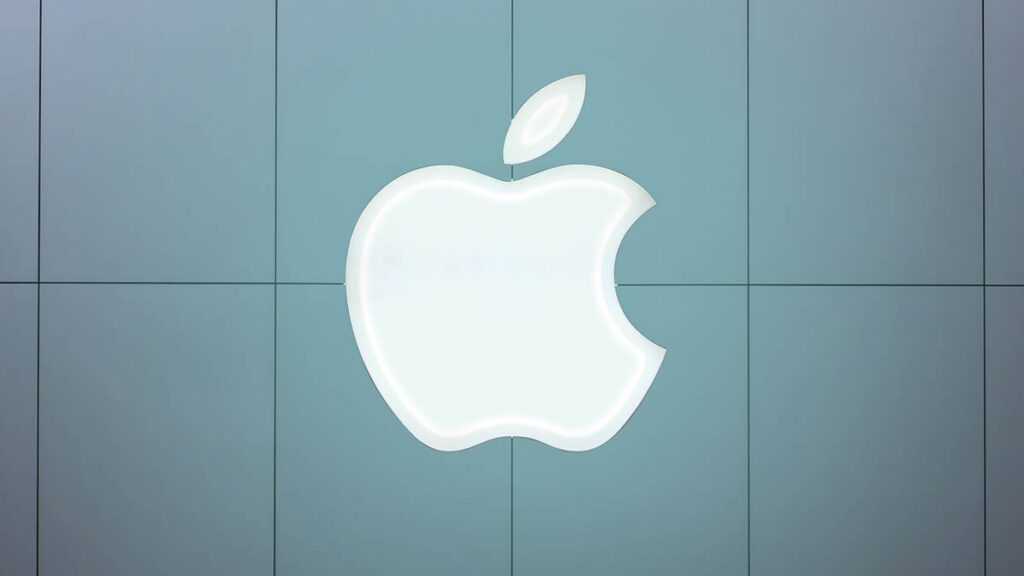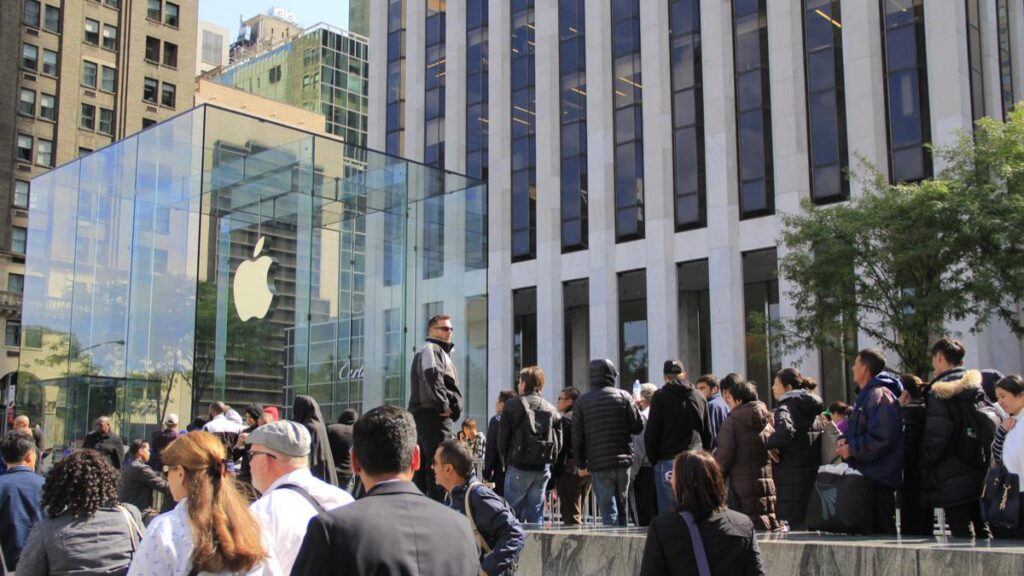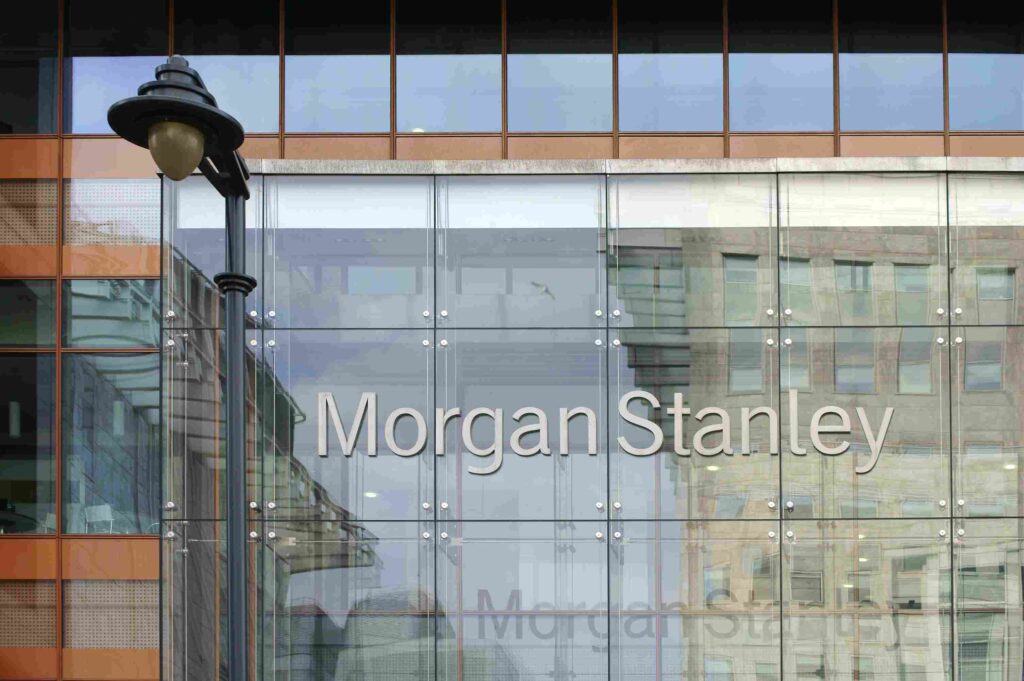
In its intraday trading on Monday, Apple became the first to reach a $3 trillion valuation when its shares hit $182.86 per share, followed by a dire drop below its milestone, as the company seeks out to fortify its capital reign on the market.
The Big Tech giant welcomes the new year with hopes of reaching its long-anticipated market share valuation, with avidity to become the first-ever Big Tech giant to get a $3 trillion market value. And that’s precisely what happened.
Until, the stock slightly plunged, closing shares at $182.01, up by 2.5 percent, locking the iPhone parent’s “market capitalization at $2.99 trillion,” according to Reuters.
The tech mogul fulfilled its capitalization goal as investors firmly believe the company has the capacity to supply its customer base with products, therefore, sustain a solid monetary margin, as consumers continue to buy Apple devices, such as iPhones, MacBooks, and in-house services – Apple TV, Apple Music, and more.
“It’s a fantastic accomplishment and certainly worthy of being celebrated,” Chief Executive Officer (CEO) of Longbow Asset Management in Tulsa, Jake Dollarhide, informed Reuters.
“It just shows you how far Apple has come and how dominant it is seen as in the majority of investors’ eyes,” he added.
While Apple briefly hit its $3 trillion valuation, the milestone, however, symbolizes more than that. It shows that the iOS developer has the immense capacity to secure its position in the industry.
With its latest capitalization, the company tripled its valuation in less than four years, with experts estimating more growth for the tech titan.

In its latest four quarters, Apple demonstrated its immense ability to sustain an annual growth for all its products, be it iPhones, Macs, or any other unit, with revenues increasing by almost 29 percent Year-over-Tear (YoY).
In 2021 alone, the Cupertino-based developer maintained a significant sale driver for its iPhone units, despite the global overtake of the semiconductor shortage caused by the rippling effect of the COVID-19 pandemic.
As for its services business, its model’s capitalization grew by 25.6 percent YoY, delivering an estimate exceeding $18 billion in revenue in its last quarter.
“The market is rewarding companies that have strong fundamentals and balance sheets, and the companies that are hitting these sort of huge market caps have proven they are strong businesses and not speculation,” senior global market strategist at Wells Fargo Investment Institute, Scott Wren, said in a statement.
Investment banking firm, Morgan Stanley, estimated in December that Apple would be able to hit a bigger target margin, raising the price tag on the company to $200 from the previously set margin of $164. The investment titan believes the company will retain its high buying rate, despite plans to release new products such as virtual reality (VR) and augmented reality (AR) headsets that have yet to own their place in the share market.
In parallel, the banking firm also highlighted that it is expecting the App Store’s revenues to exceed its expectations for its fourth quarter (Q4) as Apple was planning to ship out 83 million units – three million more than it had already anticipated for the tech giant.

Even though it is hasty to welcome the overtake of the fifth generation of wireless networks (5G), AR, VR, and artificial intelligence (AI), some of these technologies are either still in their R&D stages or in their early stages to place their trust and investments in them.
TFI Asset Management Limited analyst Ming-Chi Kuo revealed in a note on Monday that Apple has already marketed 27 million pairs of its latest generation of AirPods during the holidays period, signaling a 20 percent rise in YoY growth.
Due to its trust-worthy balance sheet and heavy cash flow, investors are willing to pump their investments into the iPhone parent by financing its latest and upcoming products, stock buybacks, as well as returning capital to shareholders via dividends.
On August 2, 2018, Apple became the first U.S.-based company with an initial publicly traded offering (IPO), hitting a whopping valuation of $1 trillion. Two years after, on August 19, 2020, the company exceeded its initial offering by closing its market with a $2 trillion valuation.
Since its Co-founder and former CEO, Steve Jobs, unmasked Apple’s first iPhone in 2007, shares skyrocketed to almost 5,800 percent.
Now, under Tim Cook’s new management, the iOS developer heightened revenues from diversified factors, such as video streaming, storage, and music services. This played a fundamental role in minimizing the giant’s reliance on iPhone sales by almost 8 percent, going from 60 percent in 2018 to reaching 52 percent in the fiscal year 2021.
Yet, while most investors are placing their trust in the hands of the Apple’s business model, others have kept their guard as worries escalate that the company might not have enough capacity to further enlarge its customer base.
Other Big Tech giants also rode the wave of hefty market capitalizations in 2021, with Microsoft reaching a whopping $2.5 trillion valuation in October, e-commerce titan Amazon marking an estimate of $1.75 market cap in September, and Alphabet Inc’s unit, Google, hitting a $2 trillion valuation in November 2021.

Apple’s latest groundbreaking $3 trillion valuation has pushed its net worth to exceed global cryptocurrency capitalization.
According to the New York Times, the Californian mogul’s net worth has surpassed that of cryptocurrency, with almost approximating to the gross domestic product (GDP) of India and the UK.
The iOS developer currently attributes to nearly 7 percent of the Standard and Poor’s 500 (S&P 500) – a stock market index tracking the performance of the top 500 firms listed in U.S.-based stock exchanges – beating IBM’s 1984 6.4 percent record.
Apple’s relatively hastily ascension and reign in market capitalization are mostly driven by its tight grip on its consumer base. The company has more control over its products and services than any other tech establishment in the sector, and its revenue growth can be arduously attributed to that.
While the COVID-19 pandemic did play a critical factor in the decline of production of its products, the fact remains that the company imbedded a certain craving for its products due to its intense business model, which relies on not only the products themselves but also the in-house services provided.